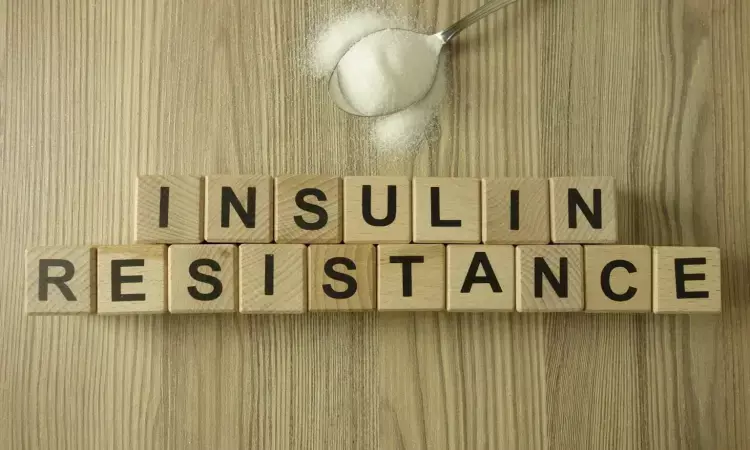- Home
- Medical news & Guidelines
- Anesthesiology
- Cardiology and CTVS
- Critical Care
- Dentistry
- Dermatology
- Diabetes and Endocrinology
- ENT
- Gastroenterology
- Medicine
- Nephrology
- Neurology
- Obstretics-Gynaecology
- Oncology
- Ophthalmology
- Orthopaedics
- Pediatrics-Neonatology
- Psychiatry
- Pulmonology
- Radiology
- Surgery
- Urology
- Laboratory Medicine
- Diet
- Nursing
- Paramedical
- Physiotherapy
- Health news
- Fact Check
- Bone Health Fact Check
- Brain Health Fact Check
- Cancer Related Fact Check
- Child Care Fact Check
- Dental and oral health fact check
- Diabetes and metabolic health fact check
- Diet and Nutrition Fact Check
- Eye and ENT Care Fact Check
- Fitness fact check
- Gut health fact check
- Heart health fact check
- Kidney health fact check
- Medical education fact check
- Men's health fact check
- Respiratory fact check
- Skin and hair care fact check
- Vaccine and Immunization fact check
- Women's health fact check
- AYUSH
- State News
- Andaman and Nicobar Islands
- Andhra Pradesh
- Arunachal Pradesh
- Assam
- Bihar
- Chandigarh
- Chattisgarh
- Dadra and Nagar Haveli
- Daman and Diu
- Delhi
- Goa
- Gujarat
- Haryana
- Himachal Pradesh
- Jammu & Kashmir
- Jharkhand
- Karnataka
- Kerala
- Ladakh
- Lakshadweep
- Madhya Pradesh
- Maharashtra
- Manipur
- Meghalaya
- Mizoram
- Nagaland
- Odisha
- Puducherry
- Punjab
- Rajasthan
- Sikkim
- Tamil Nadu
- Telangana
- Tripura
- Uttar Pradesh
- Uttrakhand
- West Bengal
- Medical Education
- Industry
Low NT-proBNP levels associated with high Insulin resistance among healthy adults: JAMA

USA: A recent study published in JAMA Cardiology has suggested an inverse relationship between insulin resistance (IR) and N-terminal pro-B-type natriuretic peptide (NT-proBNP), independent of body composition.
The results indicate that the mechanisms linking NT-proBNP to insulin resistance are partially independent of excess adiposity and may be associated with hyperinsulinemia.
"Sex-specific analyses in a cross-sectional study comprising a nationally representative sample of 4038 adults without diabetes and cardiovascular disease (CVD), revealed an association of lower NT-proBNP levels with increasing IR levels assessed using multiple approaches," the researchers reported. "The association persisted after rigorously accounting for dual-energy x-ray absorptiometry–derived lean and fat masses, waist circumference, and body mass index."
Using data from the 1999-2004 NHANES (National Health and Nutrition Examination Survey), Justin B. Echouffo-Tcheugui, Department of Medicine, Johns Hopkins University, Baltimore, Maryland, and colleagues assessed the associations between measures of IR with NT-proBNP, accounting for measures of body composition (including DEXA-derived measures) in US adults.
The study included participants aged 20 years or older with measures of body mass index (BMI), NT-pro-BNP, and dual-energy x-ray absorptiometry (DEXA)–derived measures of body composition (fat and lean masses). The associations of measures of body mass and composition (lean mass, waist circumference, BMI, and fat mass) with NT-proBNP were characterized using linear and logistic regression.
After adjusting for CV risk factors and body composition measures, the associations of homeostasis model assessment of insulin resistance [HOMA-IR] and NT-proBNP were characterized using Linear regression. They also examined the triglyceride-glucose index [TyG index], quantitative insulin sensitivity check index [QUICKI], fasting insulin, triglyceride-glucose index [TyG index], and HOMA-β.
The study included 4038 adults without diabetes or cardiovascular disease (mean age, 44 years; 51.2% female; and 74.3% White).
The study led to the following findings:
- In sex-specific analyses, insulin resistance measures were inversely associated with NT-pro-BNP.
- After adjustment including cardiovascular risk factors, BMI, waist circumference, and DEXA-derived fat mass and lean mass, the per cent change in NT-proBNP associated with an SD increase in HOMA-IR was −16.84% in women and −19.04% in men.
- Similar associations were observed for other indices of insulin resistance, including QUICKI (women: 17.27 versus men: 22.17), TyG index women: −11.47 versus men: −15.81), IGR women: −15.15 versus men: −16.61), and fasting insulin (women: −16.32 versus men: −18.22), as well as HOMA-β (women: −10.71 versus men: −11.72).
"Further mechanistic studies of the insulin and natriuretic peptides links are an important next step toward understanding the pathobiology of natriuretic peptides," the researchers concluded.
Reference:
Echouffo-Tcheugui JB, Zhang S, McEvoy JW, et al. Insulin Resistance and N-Terminal Pro-B-Type Natriuretic Peptide Among Healthy Adults. JAMA Cardiol. Published online September 06, 2023. doi:10.1001/jamacardio.2023.2758
Dr Kamal Kant Kohli-MBBS, DTCD- a chest specialist with more than 30 years of practice and a flair for writing clinical articles, Dr Kamal Kant Kohli joined Medical Dialogues as a Chief Editor of Medical News. Besides writing articles, as an editor, he proofreads and verifies all the medical content published on Medical Dialogues including those coming from journals, studies,medical conferences,guidelines etc. Email: drkohli@medicaldialogues.in. Contact no. 011-43720751


